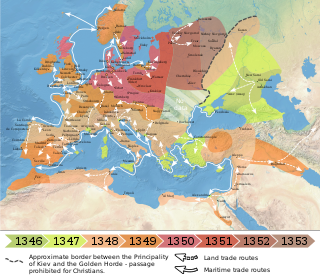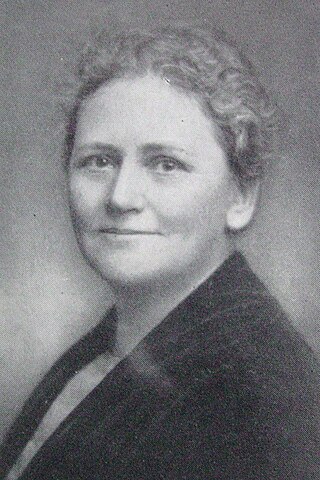Related Research Articles

Eric IX, also called Eric the Holy, Saint Eric, and Eric the Lawgiver, was a Swedish king in the 12th century, c. 1156–1160. The Roman Martyrology of the Catholic Church names him as a saint memorialized on 18 May. He was the founder of the House of Eric, which ruled Sweden with interruptions from c. 1156 to 1250.

Göksholm is a medieval Swedish castle located on the southern beach of lake Hjälmaren. It is the oldest privately owned building in Sweden that has been continuously inhabited.

Ludvig Teodor Almqvist was a Swedish politician and judge.

The law of Sweden is a civil law system, whose essence is manifested in its dependence on statutory law. Sweden's civil law tradition, as in the rest of Europe, is founded upon Roman law as codified in the Corpus Juris Civilis, but as developed within German law, rather than upon the Napoleonic Code. But, over time Sweden along with the other Scandinavian countries have deviated significantly from their classical Roman and German models. Instead, the Scandinavian countries together with Finland, the Faroe Islands, Greenland, Åland (self-governing) and Iceland may be said to have a special "Nordic" version of jurisprudence that is neither a truly civil law system nor a part of the British-derived common law legal system.
The titles Hovsångare for men and Hovsångerska for women are awarded by the Swedish monarch to a singer who, by their vocal art, has contributed to the international standing of Swedish singing. The formal title was introduced by King Gustav III of Sweden in 1773, with the first recipients being Elisabeth Olin and Carl Stenborg. The position as such, however, dates back to the 17th century, when Anne Chabanceau de La Barre and Joseph Chabanceau de La Barre were singers at the court of Queen Christina of Sweden.

The status and rights of Women in Sweden has changed several times throughout the history of Sweden. These changes have been affected by the culture, religion and laws of Sweden, as well as social discourses like the strong feminist movement.

Helga Frideborg "Frida" Maria Stéenhoff, née Wadström, was a Swedish writer and women's rights activist. She was a leading participant of the public debate of gender equality and a contributor of several radical progressive publications. She was engaged in the women suffrage movement and several humanitarian organisations.
The Civil Code of 1734, was passed by the Swedish Riksdag of the Estates in 1734, and put in effect after it had been ratified by Frederick I of Sweden 23 January 1736. It became the foundation of the later civil code in Sweden – including Finland when annexed by the Russian Empire in 1809; though many alterations have been made in both Sweden and Finland since. The current Swedish Code of Statutes is founded on the civil code of 1734.

Events from the year 1686 in Sweden
Events from the year 1608 in Sweden

The Magnus Erikssons landslag, also known as simply the Landslagen, was a Swedish law passed by king Magnus IV around 1341. It was the first attempt to apply a legal code to the entire nation of Sweden, replacing the previous local county laws under medieval Scandinavian law. The Country Law applied to the entire countryside, but not to the cities, which were governed according to the Stadslagen, which were issued in about the same time, but were separate. The Kristofers landslag from 1442, was an amended version this law, in effect in Sweden until the Civil Code of 1734.
The Stadslagen, was a Swedish law passed by king Magnus IV of Sweden in circa 1350. It governed the life in the cities of Sweden until 1734.
Swedish Armed Forces Medal for Wounded in Battle is a Swedish is a reward medal instituted by the Swedish Armed Forces and is awarded to Swedish Armed Forces personnel wounded directly or indirectly as a result of battle during international mission.

Pehr Magnus Arvid Säve was a Swedish teacher, cultural historian and artist. He was the initiator of the Gotlands Fornvänner society and Gotland Museum.
Hjördis Levin is a Swedish historian and author whose field of research focuses on gender studies.
The Law of Uppland was the law that applied in Uppland, Sweden, from 1296 to the beginning of the 1350s.

The Black Death was present in Sweden between 1350 and 1351. It was a major catastrophe which was said to have killed a third of the population, and Sweden was not to recover fully for three hundred years.

Anna Mathilda Augusta Åbergsson was a leading figure in the Swedish allotment garden movement.

Anna Vilhelmina Elisabet Åkerhielm was a Swedish writer and journalist. She wrote numerous novels, as well as for Swedish newspapers throughout her career. Her 1900 verse novel Bröderna won her a Mindre guldmedaljen award from the Swedish Academy. Åkerhielm was known as an active campaigner against women's suffrage and democracy.
References
- C. J. Schlyter, "Sveriges gamla lagar", band 12, utgiven 1869.